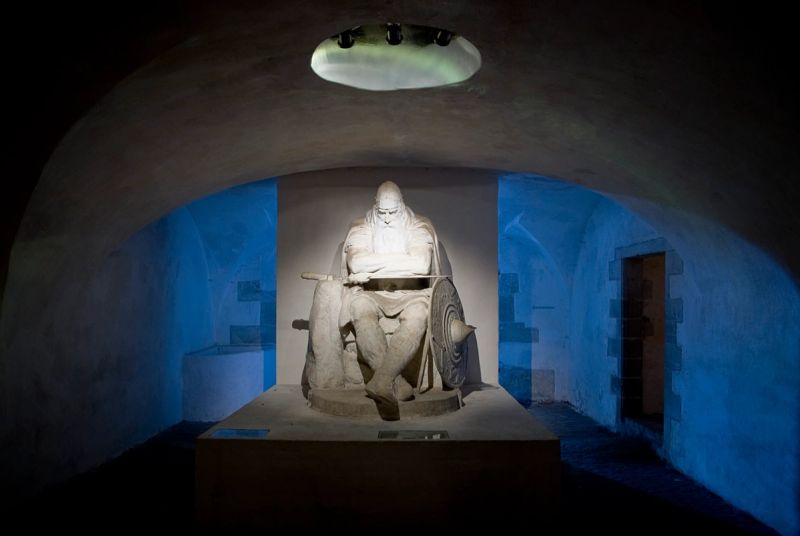Historien om Holger Danske
Hvad ved vi om Holger Dansker?
Sagnet om Holger Danske går næsten 1000 år tilbage.
Første gang vi støder på Holger Danske (eller Ogier le Danois) er således i det franske Rolandskvad, La Chanson de Roland, fra 1060. Her er Holger Danske en bifigur og optræder som en af Karl den Stores krigere.
Senere bliver Holger Danske hovedpersonen i heltedigtet La Chevalerie d'Ogier de Danemarche (1200-1215), hvor han omtales som søn af Gudfred, som er Danmarks konge og Karl den Stores fjende. Karl den Store tager Holger Danske som gidsel, men den ædle Holger Danske vender tilbage og frelser Frankrig, inden det afgørende slag mod saracenerne skal udkæmpes. Efter heltedigtet om hans store bedrifter bliver han ofte nævnt i europæisk litteratur.
Holger Danskes første danske referencer
Holger Danske optræder også i Den danske Krønike (håndskrift fra 1480, som trykkes for første gang i 1509). Beretningen om Holger Danske bliver her fortalt med flere tilføjelser, bl.a. hentet i folkevisen Holger Danske og Burmand.
Den danske litterat og bodudgiver Christiern Pedersen får i 1534 trykt en oversættelse af en fransk prosaroman om Ogier (1496), som får titlen Kong Olger Danskis Krønicke. Det er denne version af fortællingerne om Holger Danske, der ender med at blive hovedkilde til sagnene om Holger Danske, som de kendes af danskerne. Sagnene fortæller om nationalhelten Holger Danske og hans store bedrifter, samt hvordan han kommer op fra sit underjordiske skjul for at frelse nationen, hvis den er i fare.
Han kommer til Kronborg
Faktisk bliver sagnene om Holger Danske en yndet dansk folkebog, som lever videre langt op i 1800-tallet. I sagnene optræder Holger Danske flere forskellige steder i Danmark, men historien bliver efterhånden lokaliseret til Kasematterne under Kronborg.
I 1846 placerer et eventyr af H. C. Andersen også Holger Danske i Kronborgs kældre. Eventyret fortæller, at hvis Danmark kommer i fare, så vil Holger Danske trække sværdet og forsvare fædrelandet.
